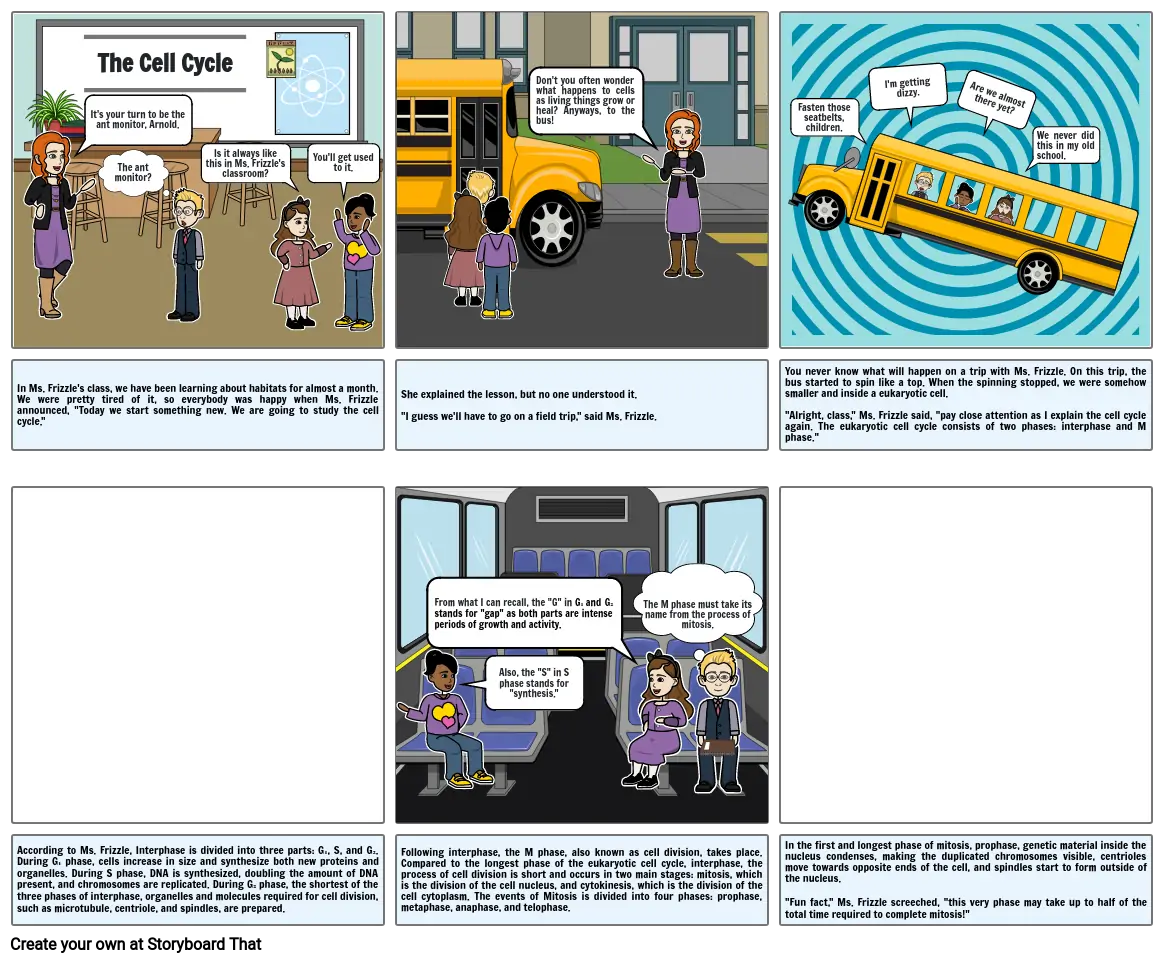A Children’s Story Book of the Cell Cycle

Storyboard Text
- It's your turn to be the ant monitor, Arnold.
- The Cell Cycle
- The ant monitor?
- Is it always like this in Ms. Frizzle's classroom?
-
- You'll get used to it.
- Don't you often wonder what happens to cells as living things grow or heal? Anyways, to the bus!
- Fasten those seatbelts, children.
- I'm getting dizzy.
- Are we almost there yet?
- We never did this in my old school.
- In Ms. Frizzle's class, we have been learning about habitats for almost a month. We were pretty tired of it, so everybody was happy when Ms. Frizzle announced, "Today we start something new. We are going to study the cell cycle."
- She explained the lesson, but no one understood it."I guess we'll have to go on a field trip," said Ms. Frizzle.
- From what I can recall, the "G" in G₁ and G₂ stands for "gap" as both parts are intense periods of growth and activity.
- Also, the "S" in S phase stands for "synthesis."
- The M phase must take its name from the process of mitosis.
- You never know what will happen on a trip with Ms. Frizzle. On this trip, the bus started to spin like a top. When the spinning stopped, we were somehow smaller and inside a eukaryotic cell. "Alright, class," Ms. Frizzle said, "pay close attention as I explain the cell cycle again. The eukaryotic cell cycle consists of two phases: interphase and M phase."
- According to Ms. Frizzle, Interphase is divided into three parts: G₁, S, and G₂. During G₁ phase, cells increase in size and synthesize both new proteins and organelles. During S phase, DNA is synthesized, doubling the amount of DNA present, and chromosomes are replicated. During G₂ phase, the shortest of the three phases of interphase, organelles and molecules required for cell division, such as microtubule, centriole, and spindles, are prepared.
- Following interphase, the M phase, also known as cell division, takes place. Compared to the longest phase of the eukaryotic cell cycle, interphase, the process of cell division is short and occurs in two main stages: mitosis, which is the division of the cell nucleus, and cytokinesis, which is the division of the cell cytoplasm. The events of Mitosis is divided into four phases: prophase, metaphase, anaphase, and telophase.
- In the first and longest phase of mitosis, prophase, genetic material inside the nucleus condenses, making the duplicated chromosomes visible, centrioles move towards opposite ends of the cell, and spindles start to form outside of the nucleus."Fun fact," Ms. Frizzle screeched, "this very phase may take up to half of the total time required to complete mitosis!"
Over 30 Million Storyboards Created

